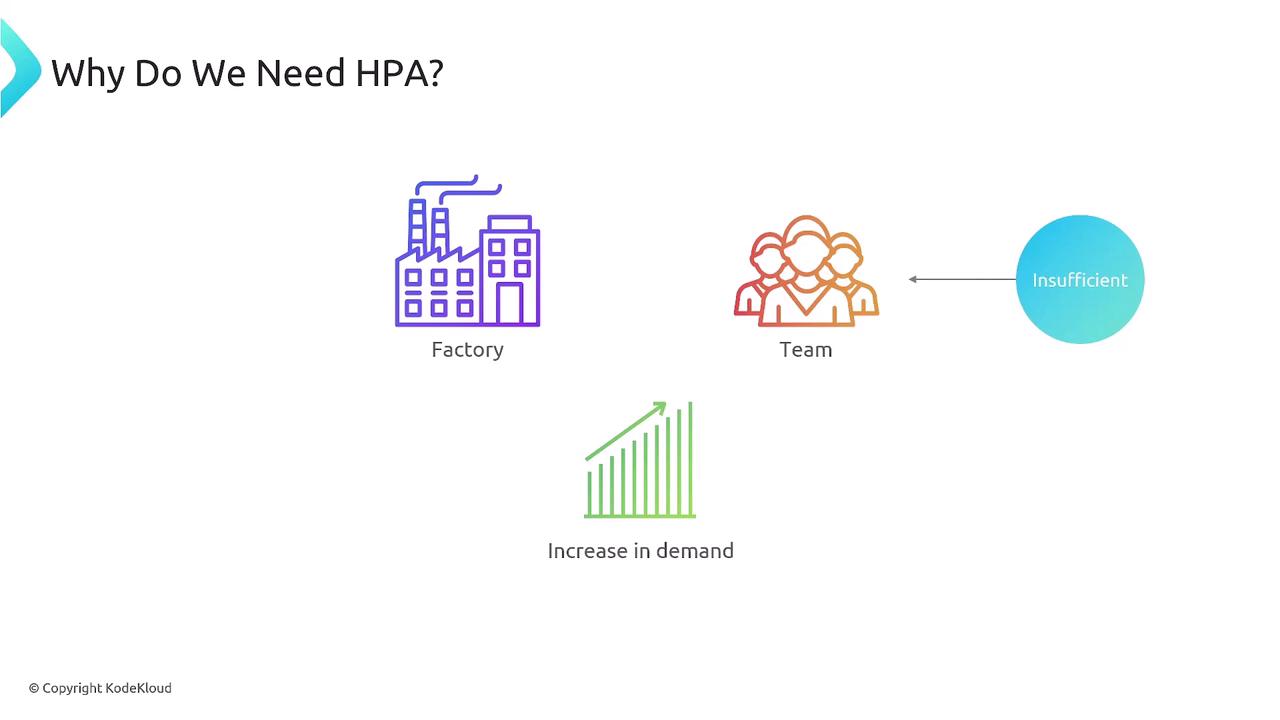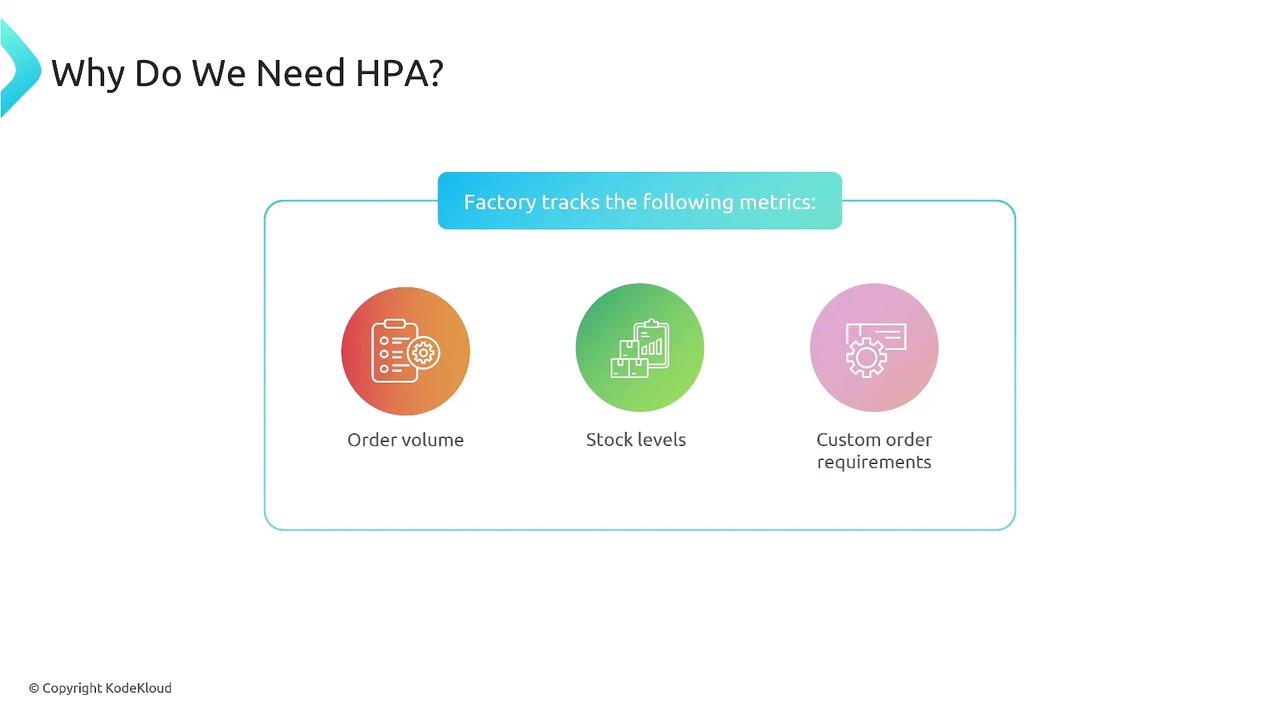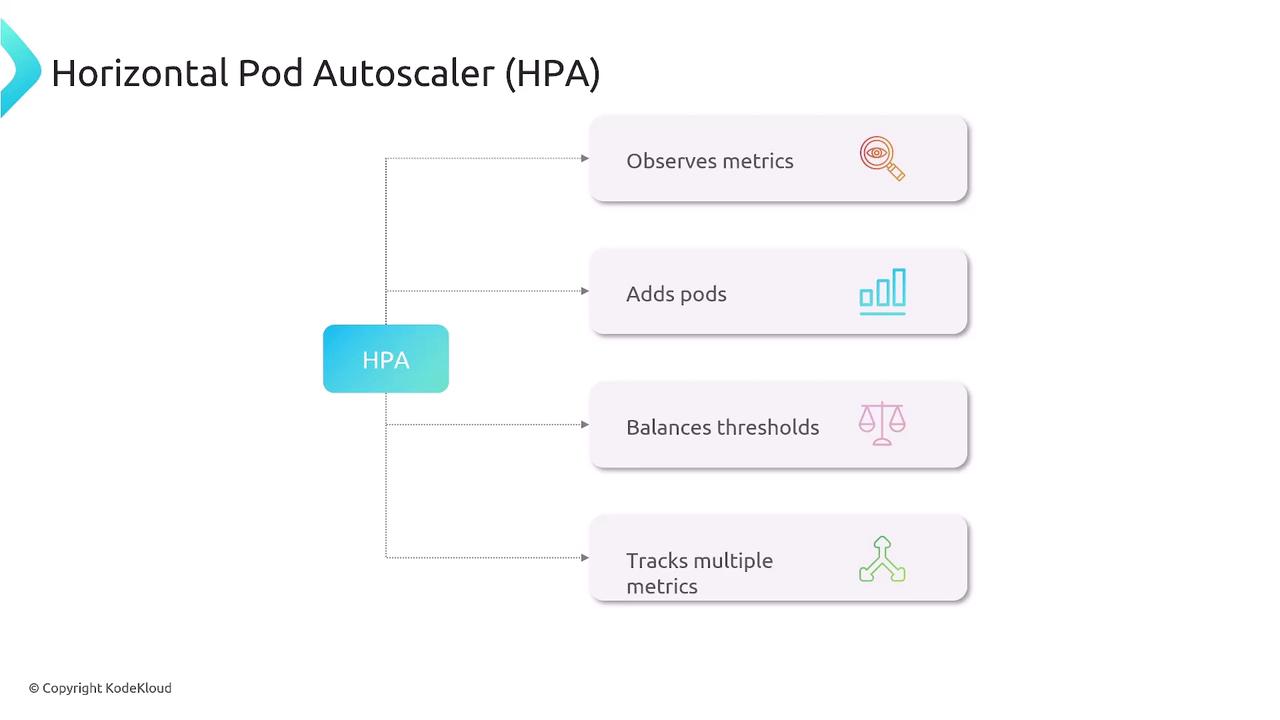Kubernetes Autoscaling
Horizontal Pod Autoscaler HPA
What Is HPA
Welcome to our deep dive into one of Kubernetes’ most powerful autoscaling features: the Horizontal Pod Autoscaler (HPA). HPA automatically adjusts your application’s pod count in response to real-time demand, ensuring optimal performance and resource utilization.
Why HPA Matters: A Factory Analogy
Imagine a manufacturing plant that employs a fixed number of workers every day. All runs smoothly—until demand suddenly spikes (say, right after the holidays). The static team can’t keep up, orders back up, and production grinds to a halt. In the world of applications, a similar scenario unfolds when user traffic surges beyond expected levels.

Just as management tracks order volume, stock levels, and special orders to decide when to call in extra staff, Kubernetes monitors metrics like CPU and memory to know when to spin up more pods.

Key Triggers for Scaling
When stock falls below a threshold or special orders demand extra handling, the factory hires more workers. Similarly, if your application’s CPU or memory usage crosses your defined thresholds, HPA will scale out your pods to maintain performance.
![]()
How the Horizontal Pod Autoscaler Works
Think of HPA as an automated supervisor that:
- Continuously gathers metrics (CPU, memory, custom)
- Compares them against target thresholds
- Adjusts the replica count of your Deployment, StatefulSet, or ReplicaSet

By default, HPA uses CPU utilization, but you can extend it to include memory, custom, or even external metrics.

HPA Metrics Overview
| Metric Type | Use Case | Default Support | Customizable |
|---|---|---|---|
| CPU Utilization | Scale on CPU load | ✔️ Yes | — |
| Memory Utilization | Scale on memory consumption | — | ✔️ Yes |
| Custom Metrics | Application-specific KPIs (e.g., queue length) | — | ✔️ Yes |
| External Metrics | Third-party services (e.g., cloud pub/sub) | — | ✔️ Yes |
Note
HPA relies on the Kubernetes Metrics Server or a Custom Metrics API to retrieve resource usage. Ensure it’s installed and configured in your cluster.
Warning
Relying only on CPU metrics can leave memory-heavy workloads unprotected. Always evaluate your application’s bottlenecks and configure HPA to use all relevant metrics.
Summary
The Horizontal Pod Autoscaler acts as a dynamic capacity manager for your Kubernetes workloads. By continuously monitoring key metrics and adjusting pod replica counts, HPA helps maintain performance during traffic spikes and reduces costs during slow periods. In the next article, we’ll cover HPA configuration and best practices for tuning thresholds to fit your applications’ unique requirements.
References
Watch Video
Watch video content